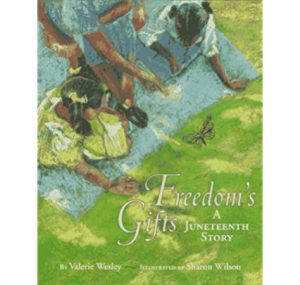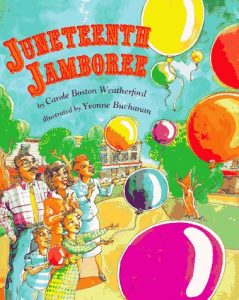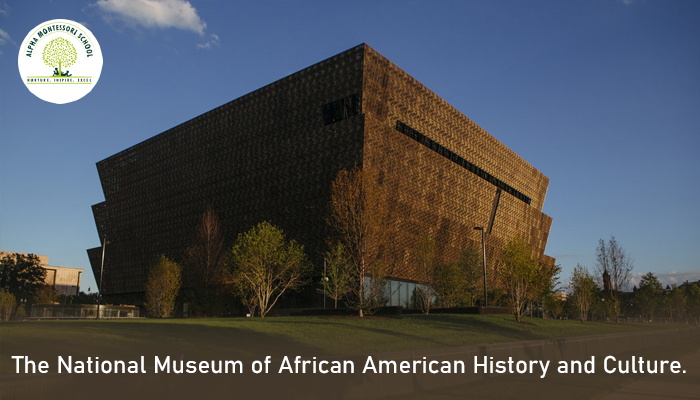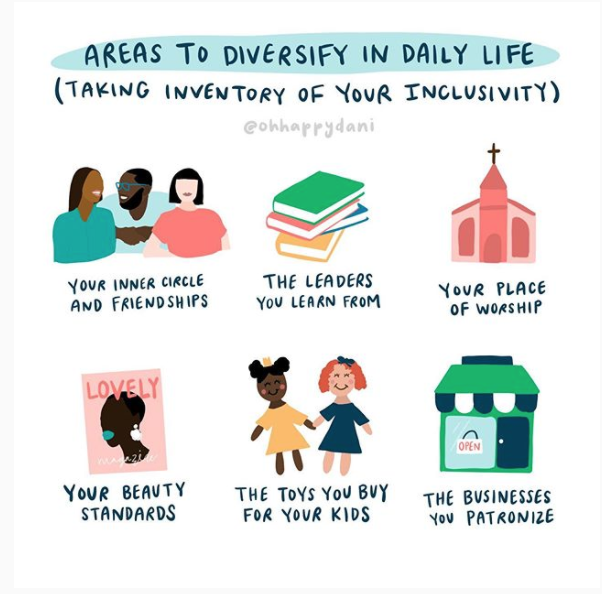Maria Montessori was an individual who had a passion for world peace and she very strongly advocated for a movement toward peace during her time. Her desire was to create a place that was inviting to diversity of different cultures. Montessori not only shows children to value cultural differences but it instills acceptance and respect in children. Our Montessori Classroom is constantly showing diversity and aiding children to connect to the world through geographical lessons and activities. The children receive an opportunity to learn cultural basics of other countries and it helps them to respect others traditions through knowledge.
In light of this, AMS not only encourages children to be aware of a need for a social equality movement but to become aware of past struggles, in a way they can understand. We invite families to share Juneteenth with their children:
- What is Juneteenth? You may have heard Juneteenth referred as Freedom Day, but what is it exactly? It is a national commemoration of the ending of slavery in the United States. Union soldiers arrived on June 19th, 1865, at Galveston, Texas with news that the slaves were free due to the war ending.
- Prior to June 19th, there was the movement for the abolishment of slavery such as the Emancipation Proclamation, which officially began January 1st, 1863. However, it had almost no impact on Texas due to Union troops not enforcing the Executive Order until two years later on June 19th, 1865.
- How can you celebrate Juneteenth today with your children? It used to be that Juneteenth was celebrated by Black Americans only but today it is becoming more widely celebrated due to the desire for social change. On this day, many gather together to honor Black Americans, we share stories of what Black Americans went through in history and some even hold religious services on this day to pay respect.
Books for our younger friends to read:
All Different Now: Juneteenth, the First Day of Freedom
By Angela Johnson

Freedom’s Gifts
By Valerie Wesley

Juneteenth Jamboree
By Carole Boston Weatherford

Juneteenth for Mazie
By Floyd Cooper

What are we doing in AMS to begin a social change for equality and acceptance for all? Here in AMS cultural diversity is so important, we desire to instill a love for acceptance in children, no matter what their cultural background is. We hold our Cultural Parade where we invite both children and parents to represent where they come from, we also invite them to bring in a family dish to share with others. This is our celebration to celebrate our differences and show children not only tolerance of different cultural backgrounds but acceptance for them. We must be the change we desire to see in the future and we can begin by helping our children understand acceptance of others at home.
Here are some other ways to make Juneteenth more meaningful for your family.
1. Make toys, books and activities representative

Listen to and learn about systemic racism. It is hard to explain this to a toddler or a preschooler but educating ourselves as parents can sensitize us.
If you find that there is not enough representation of dark skin colors and diversity in your child’s toy box, that would be a great place to start!
2. Resources to talk to your children about Juneteenth
It can be difficult to talk to your child about Juneteenth if you do not want to talk about slavery. There is a TED Talk by Beverly Daniel Tatum titled “Is My Skin Brown Because I Drank Chocolate Milk?” The TED talk is all about how she explained skin color to her son. Do listen towards the end about how she explains slavery to her four-year-old-son. It is simple, straightforward and explains the current situation beautifully.
We also loved this simple and clear video on systemic racism. It impacts everything from loans, education, criminal justice and power structures.
Even a simple act such as coloring a flag is a powerful way to reinforce a sense of community. We always color and identify our national flags but the Juneteenth flag is very much part of our history and collective identity. Here is a Juneteenth flag printable you can use.
3. Visit a museum virtually

Juneteenth is the country’s second independence day and The National Museum of African American History and Culture has a comprehensive video tour of the legacy of Juneteenth. It is a community space where that gives a voice to histories that have been marginalized.
4. Be an ally

Support businesses and organizations that are owned by African Americans. Donations aside, being a patron of a business run by an African American is a great way to show that you are an ally. Listen to the community and its voices.
We love this advice from Dr. Dana E. Crawford, a clinical psychologist who works with children. She says, “The best way for parents to teach a celebration of difference is to live a life that celebrates difference. Teaching about racism is a bit of a tall order for little ones that haven’t learned how to keep their beds dry at night. Therefore, the focus should be on helping infants and toddlers develop a brain that views differences in skin color as normative. Infants and toddlers learn from watching and repetition.”
Change starts at home. We all have immense capacity for empathy, love and compassion.
Sometimes, it becomes important to check our own bias and find our own representation and strength to be good allies to the Black community. We leave you with this picture from @ohhappydani on Instagram who explains how it all starts at home.


 July 17th, 2020
July 17th, 2020

I don’t think the title of your article matches the content lol. Just kidding, mainly because I had some doubts after reading the article.
I don’t think the title of your article matches the content lol. Just kidding, mainly because I had some doubts after reading the article. https://www.binance.com/en-IN/register?ref=UM6SMJM3
Thanks for sharing. I read many of your blog posts, cool, your blog is very good. https://www.binance.com/si-LK/register?ref=V2H9AFPY
Your article helped me a lot, is there any more related content? Thanks!
so happy to find good place to many here in the post, the writing is just great, thanks for the post.
Thank you for your sharing. I am worried that I lack creative ideas. It is your article that makes me full of hope. Thank you. But, I have a question, can you help me?
Thank you for your sharing. I am worried that I lack creative ideas. It is your article that makes me full of hope. Thank you. But, I have a question, can you help me?
This medicine is provided as a shot under the skin of your belly, thighs, or arm.
Evden eve nakliyat Daha önce birçok kez taşındım ve her taşınma süreci benim için oldukça stresli oldu. Ancak bu kez Kozcuoğlu Evden Eve Nakliyat ile çalışarak bu sürecin ne kadar kolay hale gelebileceğini deneyimledim. Öncelikle firma yetkilileri çok ilgili ve bilgilendiriciydi. Anlaşma sağladıktan sonra belirlenen gün ve saatte ekip geldi. Taşınma öncesinde tüm eşyalarımı dikkatlice incelediler ve hangi eşyaların nasıl taşınacağına dair bir plan yaptılar. Değerli eşyalarımı ekstra özen göstererek paketlediler ve taşıma esnasında hiçbir şekilde zarar görmemeleri için titizlikle çalıştılar. Taşınma sürecinde en çok dikkat ettiğim nokta, eşyalarımın zarar görmemesiydi ve Kozcuoğlu ekibi bu konuda gerçekten başarılıydı. Yeni eve taşındığımda tüm eşyalarım eksiksiz ve hasarsız bir şekilde ulaştı. Ekip üyeleri güler yüzlü, sabırlı ve son derece profesyoneldi. Bu hizmeti herkese gönül rahatlığıyla öneririm!
Evden eve nakliyat firmaları arasında en iyi deneyim! Her aşamada titiz ve profesyonel bir hizmet sundular. Hiçbir sorun yaşamadım, gönül rahatlığıyla öneriyorum.
Evden eve nakliyat hizmeti arıyorsanız, doğru adrestesiniz! Kozcuoğlu, en kaliteli ve güvenilir nakliyat firmalarından biri. Tüm taşınma sürecim sorunsuz geçti.
Evden eve nakliyat konusunda profesyonellikleriyle fark yaratıyorlar! Taşınma sürecim çok hızlı ve güvenli geçti. Tüm eşyalarım sağlam bir şekilde yeni evime ulaştı. Kozcuoğlu ekibi, gerçekten işinin ehli.
Evden eve nakliyat işini titizlikle yapan bir firma! Eşyalarımın güvenli taşınması için her ayrıntıyı düşündüler. Kesinlikle en iyi nakliyat hizmeti!
Evden eve nakliyat sürecinde harika bir deneyim yaşadım! İstanbul’da evimi taşımam gerektiğinde Kozcuoğlu’nu tercih ettim. Çalışanlar güler yüzlü, işlerini titizlikle yaptılar. Hiçbir eşya zarar görmedi ve her şey zamanında tamamlandı.
Evden eve nakliyat konusunda endişesiz bir taşınma yaşadım! Eşyalarımın zarar görmesinden korkuyordum, ancak Kozcuoğlu ekibi titiz çalıştı. Profesyonel hizmet almak isteyenler için harika bir seçenek.
Evden eve nakliyat ile taşınmak hiç bu kadar kolay olmamıştı! Kozcuoğlu ekibi, işini bilen profesyonellerden oluşuyor. Taşınma sürecim boyunca tüm detaylarla ilgilendiler ve her şey sorunsuz ilerledi.
Evden eve nakliyat | Eşyalarımın zarar görmeden taşınması benim için en önemli kriterdi ve Kozcuoğlu Nakliyat bu konuda beklentilerimi fazlasıyla karşıladı. Ekip, taşınma günü tam saatinde geldi ve sistematik bir şekilde çalıştı. Tüm mobilyalarımın sökülmesi, paketlenmesi ve taşınması sırasında büyük bir titizlik gösterdiler. Kırılacak eşyalarım ekstra koruma ile sarıldı ve her şey düzenli bir şekilde taşındı. Yeni evime vardığımızda da tüm eşyalarımı istediğim gibi yerleştirdiler. Montaj işlemlerini eksiksiz tamamladılar ve paketleme atıklarını temizleyerek teslimatı gerçekleştirdiler. Gerçekten profesyonel bir hizmet aldım. Eğer sorunsuz bir taşınma süreci yaşamak istiyorsanız, Kozcuoğlu Nakliyat’ı gönül rahatlığıyla tercih edebilirsiniz.
Evden eve nakliyat hizmetinde kalite ve güven bir arada! Eşyalarım tam planlanan saatte taşındı ve tüm süreci sorunsuz tamamladılar. Hem hızlı hem de profesyonel bir ekip.
Evden eve nakliyat hizmetiyle beklentilerimin üstüne çıktılar! Daha önce böyle profesyonel bir taşınma süreci yaşamamıştım. Kozcuoğlu’nu kesinlikle tavsiye ediyorum.
Evden eve nakliyat hizmeti arıyorsanız, doğru adrestesiniz! Kozcuoğlu, en kaliteli ve güvenilir nakliyat firmalarından biri. Tüm taşınma sürecim sorunsuz geçti.
makar web | SEO-driven strategies by MAKAR Web ensure businesses achieve maximum visibility.
makar web | Every website by MAKAR Web is a blend of innovation and sophistication.
makar web | Unparalleled expertise and innovative strategies define MAKAR Web’s excellence.
makar web | Enhancing brand identity through tailored solutions, MAKAR Web leads the way.
0n8EBHJen2G
Indonesia Wholesale Perfume | Klasik kokular asla modasını kaybetmez. Kaliteli bir parfüm, yıllar geçse de etkisini sürdürebilir.
makar web | MAKAR Web transforms ideas into visually compelling and highly functional websites.
6i82xWngDm0
KARAKAR Web Tasarım | Günümüz dijital dünyasında, responsive web tasarım bir zorunluluk haline gelmiştir. Mobil uyumlu olmayan siteler, hem SEO açısından geride kalır hem de potansiyel müşterilerini kaybeder.
KARAKAR Web Tasarım ve Yazılım Ajansı | Laadsnelheid is een cruciale succesfactor. Optimaliseer afbeeldingen, code en hosting voor betere prestaties.
KARAKAR Web Tasarım ve Yazılım Ajansı | Bir web sitesinin başarısı, kullanıcı dostu olması, hızlı çalışması ve güvenli bir altyapıya sahip olmasıyla doğrudan ilişkilidir.
KARAKAR Web | Web tasarım sadece bir görsellik meselesi değildir, aynı zamanda performans ve işlevsellikle de ilgilidir. Kullanıcı dostu arayüzler ve optimize edilmiş kod yapıları, web sitenizin başarısını artırır.
Your point of view caught my eye and was very interesting. Thanks. I have a question for you.
KARAKAR Web | Dijital dünyada fark yaratmak için web sitenizi sadece tasarım açısından değil, performans açısından da optimize etmelisiniz.
I don’t think the title of your article matches the content lol. Just kidding, mainly because I had some doubts after reading the article.
KARAKAR | Doğru tasarlanmış bir kurumsal web sitesi, firmanızın prestijini yükseltir.
KARAKAR Web | İçerik pazarlaması, web sitenizin organik trafiğini artırmada önemli bir faktördür.
KARAKAR | Yazılım ve web geliştirme, markanızın dijital başarısının temel taşlarından biridir.
KARAKAR | Web sitenizin performansı, kullanıcı deneyimini doğrudan etkileyen bir faktördür.
KARAKAR Web Tasarım ve Yazılım Ajansı | Un site web doit être bien plus qu’une vitrine. Il doit offrir une navigation fluide et un contenu engageant.
KARAKAR Web | Un site sécurisé protège les données des utilisateurs et renforce leur confiance. La cybersécurité ne doit jamais être négligée.
KARAKAR Web Tasarım ve Yazılım Ajansı | Web siteniz, potansiyel müşterilerinize ilk izlenimi sunar. Bu yüzden profesyonel bir tasarıma sahip olmalısınız.
KARAKAR | Responsive tasarım, her cihazda mükemmel görüntü sunar. Bu nedenle çok önemlidir.
KARAKAR Web Yazılım | Web siteniz, firmanızın 7/24 açık bir şubesi gibidir. Doğru tasarım ve yazılım altyapısıyla müşterilerinize her an ulaşabilirsiniz.
KARAKAR Web | E-ticarette başarılı olmanın anahtarı, kullanıcıya kolay ve güvenli bir alışveriş deneyimi sunmaktan geçer.
KARAKAR Web | Une structure bien pensée améliore l’expérience utilisateur et augmente les taux de conversion. Simplicité et clarté sont la clé du succès.
KARAKAR Web Tasarım ve Yazılım Ajansı | İyi bir web sitesi, markanızın hikayesini etkili bir şekilde anlatmalı ve hedef kitlenizi ikna edebilmelidir.
KARAKAR Web Tasarım | Een goed gestructureerde website helpt bedrijven geloofwaardigheid te vergroten en bezoekers om te zetten in klanten.
KARAKAR Web Tasarım ve Yazılım Ajansı | Kullanıcı deneyimini ön planda tutan bir web tasarım, ziyaretçilerinizi müşteriye dönüştürme şansınızı artırır. Basit, anlaşılır ve estetik bir tasarım, siteyi daha etkili hale getirir.
KARAKAR Web | Web sitenizin dönüşüm oranlarını artırmak için sayfa tasarımını kullanıcı deneyimine uygun şekilde geliştirmelisiniz.
KARAKAR | Google algoritmaları değişse de kaliteli içerik her zaman önemlidir.
KARAKAR Web Tasarım ve Yazılım Ajansı | Güvenli olmayan web siteleri, müşterilerinize zarar verebilir. SSL kullanımı zorunludur.
KARAKAR Web | Mobil uyumlu olmayan web siteleri, potansiyel müşterileri kaçırabilir.
KARAKAR Web Tasarım | Online bedrijven hebben een sterke webaanwezigheid nodig. Een goed ontwikkelde website is de sleutel tot succes.
KARAKAR | Başarılı bir e-ticaret sitesi oluşturmak için doğru yazılım altyapısını seçmek önemlidir. Güvenli ödeme sistemleri, hızlı yükleme süresi ve SEO uyumluluğu, satış oranlarını doğrudan etkiler.
KARAKAR Web Tasarım | Sade ve minimalist bir web tasarımı, kullanıcıların içeriğe daha rahat odaklanmasını sağlar ve dikkati dağıtmaz.
KARAKAR Web Yazılım | Web siteniz, hedef kitlenizle etkileşim kurmak için en önemli araçlardan biridir.
KARAKAR Web | Hızlı yüklenen ve düzenli güncellenen bir web sitesi, rakiplerinizden bir adım önde olmanızı sağlar.
KARAKAR Web | Başarılı bir e-ticaret sitesi oluşturmak için doğru yazılım altyapısını seçmek önemlidir. Güvenli ödeme sistemleri, hızlı yükleme süresi ve SEO uyumluluğu, satış oranlarını doğrudan etkiler.
KARAKAR Web | E-ticaret başarısı, doğru web tasarımı ve güçlü altyapıyla mümkündür.
KARAKAR Web Tasarım | Günümüz teknolojisinde web tasarımı sadece bir estetik unsur değil, aynı zamanda bir pazarlama stratejisidir.
Can you be more specific about the content of your article? After reading it, I still have some doubts. Hope you can help me.
KARAKAR Web Tasarım | Web tasarım trendleri sürekli değişiyor. Markaların buna uyum sağlaması gerekiyor.
KARAKAR Web | Web tasarım ve SEO birlikte düşünülmelidir. Aksi takdirde siteniz trafik kaybedebilir.
KARAKAR Web | Kurumsal bir web sitesi, firmanızın profesyonelliğini ve güvenilirliğini yansıtmalıdır. Güçlü bir dijital kimlik oluşturmak için tasarım, içerik ve teknik altyapının uyumlu olması gerekir.
KARAKAR Web Yazılım | Rakiplerinizden bir adım önde olmak için yenilikçi ve kullanıcı odaklı bir web tasarımı oluşturmalısınız.
KARAKAR Web Tasarım | Web sitesi sahipleri, sayfa hızını artırmak için optimize edilmiş görseller ve hafif kod yapıları kullanmalıdır. Gereksiz eklentiler ve ağır kodlar, sitenin performansını olumsuz etkileyebilir.